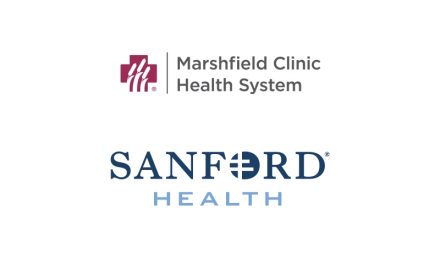
On the Record with Intellivisit CEO Jeff Miller and CMO Dr. Drew Palin
A Milwaukee-area tech company is aiming to address what its CEO calls is a “big gap” through an app that uses artificial intelligence to help patients get the care they need.
Patients can enter their symptoms into Intellivisit’s app, which then asks additional questions and identifies a probable diagnosis. That information heads to a doctor who can confirm the diagnosis and decide whether the patient needs to meet in-person or not.
“It really is that simple,” Jeff Miller, Intellivisit CEO, said. “It’s a better solution, a better mousetrap for really basic primary care.”
Miller and Dr. Drew Palin, the company’s chief medical officer, recently spoke to Wisconsin Health News about the company.
Edited excerpts are below.
WHN: What are you doing that’s different from what other companies offering?
Dr. Drew Palin: The user or patient just has to open the app. They don’t have to schedule an appointment, they don’t have to sit in a waiting room, they don’t have to wait for someone to answer their call whether it’s a phone or point-to-point video. Immediately, they put in their systems or what their complaint is. And the AI engine takes that and conducts a dynamic adaptive medical interview. Depending on how they answer the questions and what symptoms they present with, the AI engine adapts the interview to get enough information to come up with a list of rational, probable diagnoses. We’re making healthcare easier to access because it’s anytime, anywhere. We’re making it more efficient because the physician or nurse doesn’t have to ask all the questions they do when you go into the office. The AI engine asks for that. And we’re also trying to make it more effective because the AI engine comes up with that list of potential diagnoses that the provider reviews and chooses from. So we’re trying to increase the accuracy of the diagnosis. That’s how we’re trying to differentiate and that’s where we think healthcare is headed.
There are a lot of things out there. There are some apps either through WebMD or Symptom Checker. So if you think you have conjunctivitis, you say “conjunctivitis” and it will ask you a series of questions to clarify that. But with the AI engine, you don’t have to make the diagnosis. You just put in your symptom. So in the 2,500 patients we’ve treated to date, 78 percent we’ve been able to treat virtually, which means they haven’t had to see the doctor, haven’t had to talk to the doctor. They’ve just done it through the app, and the provider reviews their information and 62 percent of the time there’s a prescription that goes with the treatment plan. It’s all focused on primary care. In the next two months, we’re going to add a large subset of pediatrics. So right now it’s adult primary care and kind of acute self-limited diseases whether it’s an upper respiratory infection, bronchitis, sinusitis, asthma. The people usually know what they have but they need a prescription or they need some help or they need some confirmation. So that’s what we’re focusing on.
WHN: Are you concerned about whether this app might misdiagnose someone or they might enter symptoms incorrectly? Do you think this could lead to uncoordinated care?
Jeff Miller: The clinical judge for this is all on the clinician. The app’s job is to present all the information to let the clinician make that judgement. Now that being said, there are limitations of what can be done virtually. And again that judgement, instead of us programming that in and saying we treat this and don’t treat that, we leave the clinical judgement to the clinician. So clearly how we position it and market it is toward those limited set of conditions that lend itself nicely to be done virtually. So purely by the use of it, these are typically not life-threatening things, right? We avoid that. On the flip side, we also have integration into medical records, charts that the physicians have at their fingertips so they have much more information about the patients, particularly if they’re integrated and they’re marketing this to their current patients as an extension of their reach. There’s already an intimate knowledge between most of the patients and clinicians so they can get that history of seeing them live also. It’s very helpful and the clinical integration will do that. But really the point is that the clinical judgement has to come from the physician. And one last point is that there’s lots of fragmented care. People are walking into clinics, they’ve never seen these patients before. The patients try different places; they’re walking into a Walgreen’s. They don’t have medical history. The system itself is full of fragmented care and in the right settings it’s not dangerous. We do believe that care integrated with the EHR and all of those things is very helpful and we strive to do that with our clients.
WHN: Who are your customers? Who are you targeting?
JM: What we’re targeting is really kind of two-fold. We’re targeting clinical partner organizations that can be our clinicians. That can be anything from a health system to some sort of clinical enterprise, a physician organization of some kind, that is looking to both do the clinical work we need done as well as extend their reach virtually to their patients. So we’re working with health systems in that way and we’re working with clinical organizations. Ultimately though, the beneficiary of our business is really employers that can offer this as part of their health plan to their employees, particularly self-funded plans that are trying to reduce costs, improve quality, improve the absenteeism and all the things that kind of go with sick employees and getting them healthier and more convenient care provided to them. So we’re also targeting employers. We’re doing that directly and we’re doing that indirectly through aggregators like brokers and TPAs and things like that. So really we’ve kind of got a gamut of customers. We’ve got a number of employers in Wisconsin, some small ones and some medium-sized ones. We have a clinical partner who’s also running a worksite clinic. And the worksite clinic strategy is very interesting because they’re already working with employers and they can only be open so many hours a week. So we can extend that so it can run 24/7 and is virtual on top of it. That’s also in Wisconsin. In Illinois, we’re working with a medium-sized health system that has a large primary care group, a large number of employees within the health system and they’re also working in their market with employers. The anchor though is working with the health system.
WHN: What’s next for Intellivisit?
JM: Our vision is that we’ve built a platform to engage in a number of medical things. We’re creating this narrow definition of minor primary care issues. But our platform is built for more things. So like we said before, we’re going to add pediatrics, so that lets us reach more people. Mental health would be another module we would be adding down the road. We might start to add things like prescription refill services, which would maybe link in lab work. There’s this platform that once you’re engaging consumers for their healthcare needs, now we just need to deliver more healthcare services. So we’ll continue to add on further and further, broadening healthcare services, realizing that at the end of the day, there’s only so many things we can do virtually. That’s one strategy.
We’ll also expand on what we call routing, which is if we can’t treat you today, where can we put you for the most effective, lowest cost ease-of-use service. For example, if we can’t treat you virtually, maybe we put you in front of the line at the urgent care center. So they already know what’s wrong with you. We’ve updated them, and now they’re heading over to urgent care and moving to the front line. Those are the things we’re heading into over time as well as additional clinical capabilities. That in a nutshell – expanding the platform, doing more things and obviously putting more lives into the system.
DP: AI is just the tip of the iceberg. One of the things about AI is that it gets smarter the more it’s used. The more data it has, the more effective it becomes. So we’re just beginning this quest. So there’s a lot we need to do with enhancing the quality and output of the AI by giving it more data and more inputs. The other thing that Jeff didn’t mention that I’m very keen on is out-of-body sensors are becoming ubiquitous whether it’s your FitBit, your watch or your heart sensor. If we can start aggregating that data over time, and allowing AI and other analytic tools to analyze it, we might be able to tell you you’re sick before you know it. And then we can be more proactive and things. So this is just the beginning of what is being referred to as precision medicine, where everybody gets treated uniquely based on their genotype, their biometrics, their current state. It’s going to take these platform technologies that integrate data from multiple, multiple sources to make that work. So we’re working to be a part of that.





